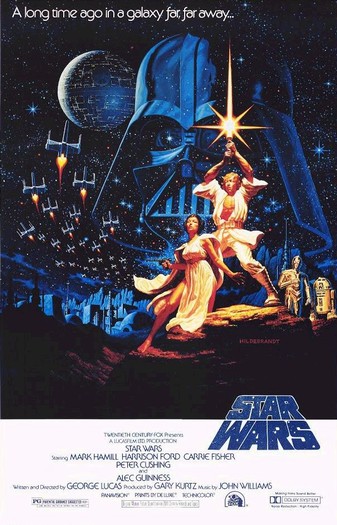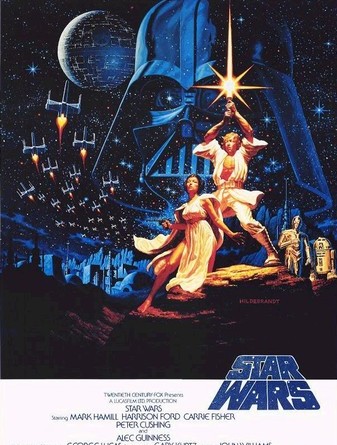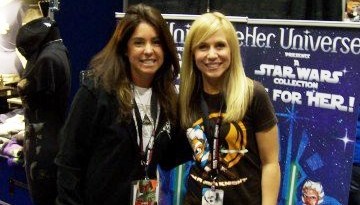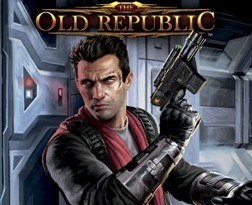Feminism and Star Wars: A Discussion of the Sexualization of Female Characters
On Saturday night, I joined Riley and Bethany Blanton from Star Wars Report, Bryan Young from Full of Sith, Teresa Delgado from Star Wars Bookworms, and Scott Romanski to discuss feminism and the sexualization of female characters in the Galaxy Far Far Away. The conversation ranged from a look back at the Slave Leia outfit and Padmé’s Geonosian bare mid-riff to the future of the Sequel Trilogy. My opinions on the use of both costumes within the scope of the movies are well-documented here at FANgirl.
 Overall, the panel agreed that Star Wars has done a good job with its female characters. In fact, I haven’t heard that much Padmé love anywhere previously. This is a complicated topic, which spans from out-of-universe concerns, such as societal expectations, to the in-universe needs of the narrative. We seemed to find a consensus that good characterization will take care of specific concerns.
Overall, the panel agreed that Star Wars has done a good job with its female characters. In fact, I haven’t heard that much Padmé love anywhere previously. This is a complicated topic, which spans from out-of-universe concerns, such as societal expectations, to the in-universe needs of the narrative. We seemed to find a consensus that good characterization will take care of specific concerns.
One of the points I brought up is that Star Wars and its fandom has to recognize how the casual audience perceives the franchise. In feminist literature, Leia and Padmé rarely come up as shining examples of female characters. In part that may be due to the fact that Star Wars consciously chose to aggressively pursue the male consumer with toys and merchandise from the start and has engaged the female consumers only much later. Marketing choices also can affect public perception. Even though Leia was a self-rescuing princess in A New Hope, from the start the movie posters portrayed her otherwise*. Similarly, heavy use of the Slave Leia image has given the feminist community a reason to question whether the storytelling choice is genuine. As in anything in life, first impressions do matter. Star Wars fans might watch a movie numerous times and read the related comics and books, taking away a different impression of a character than a single scantily dressed image that is plastered across the media.
Along similar lines, the panel also discussed defining sexy. In recent years, the definition has been changing. The example I used was the portrayal of Han Solo versus Anakin Skywalker in the movies. I find Han Solo sexually appealing, yet he isn’t ever bare-chested in the Original Trilogy. Anakin Skywalker, on the other hand, is shown shirtless and open-shirted, yet I struggled at times relating to Padmé’s attraction to him. Katniss from The Hunger Games and Hermione from Harry Potter are some of the other examples mentioned of female characters who are widely found appealing, and the defining images of both characters within the film and in media are not sexualized.
Many thanks to Teresa Delgado for herding the cats into one chatroom for the discussion. If you would like to read more of my thoughts on the matter, here are some of the related posts:
- My thoughts on Slave Leia
- My thoughts on Midriff Padmé
- My thoughts on the perception of Star Wars as a boys’ franchise
- Some FANgirl thoughts on the broader feminist perspective of Star Wars
- FANgirl coverage and reviews of the Legacy and Dawn of the Jedi
* Clarification of point: This is the POV related to me by others outside the Star Wars fandom.
Tricia Barr took her understanding of brand management and marketing, mixed it with a love of genre storytelling, and added a dash of social media flare to create FANgirl Blog, where she discusses Star Wars, fandom, and strong female characters. She also writes about Star Wars for Random House’s science fiction and fantasy blog Suvudu.com and Star Wars Insider magazine and is a contributor for Her Universe’s Year of the Fangirl. She has recently joined Beyond the Screens podcast as a regular contributor.
Tricia is putting the finishing touches on her first novel, Wynde – a military science fiction with a fantastical twist that features heroines Vespa Wynde and Gemini Reed. For excerpts and tales of her adventures in creating a fictional universe, hop over to TriciaBarr.com.
For updates on all things FANgirl follow @FANgirlcantina on Twitter or like FANgirl Zone on Facebook.
- Hyperspace Theories: Bad Luck Ghorman - June 2, 2025
- Hyperspace Theories: One Year Later as ANDOR Kicks Off Season Two - May 15, 2025
- REVIEW: Tales of the Underworld - May 4, 2025












Pingback:Feminism in Star Wars | Fangirl Next Door
Pingback:Agent of My Own Destiny: A Discussion of Character Agency « fangirlblog.com
Pingback:Fangirls Going Rogue Premieres | Fangirl Next Door
Pingback:Slave Leia Sells? Amy Schumer, Boy Toys, and the Star Wars Fandom Double Standard « FANgirl Blog